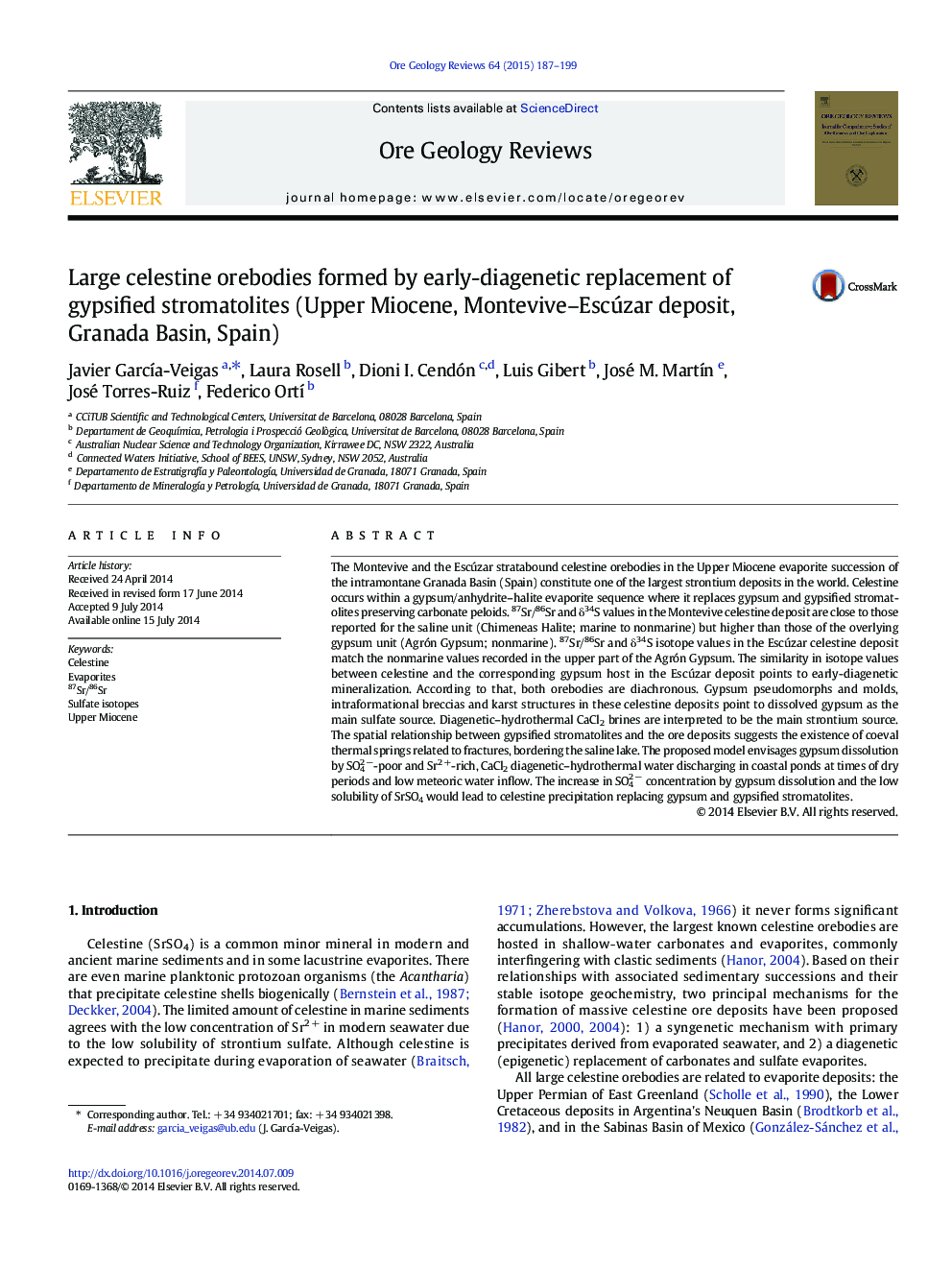| کد مقاله | کد نشریه | سال انتشار | مقاله انگلیسی | نسخه تمام متن |
|---|---|---|---|---|
| 4697103 | 1637239 | 2015 | 13 صفحه PDF | دانلود رایگان |

• Early diagenetic celestine replaces gypsified stromatolites.
• Gypsum precipitated in a lake mainly fed by SO42 − rich meteoric waters.
• An additional source of CaCl2 thermal waters was the main Sr2+ source.
• Temporary increases in CaCl2 waters promoted gypsum dissolution.
• Released SO42 − combined with Sr2+ triggered gypsum replacement by celestine.
The Montevive and the Escúzar stratabound celestine orebodies in the Upper Miocene evaporite succession of the intramontane Granada Basin (Spain) constitute one of the largest strontium deposits in the world. Celestine occurs within a gypsum/anhydrite–halite evaporite sequence where it replaces gypsum and gypsified stromatolites preserving carbonate peloids. 87Sr/86Sr and δ34S values in the Montevive celestine deposit are close to those reported for the saline unit (Chimeneas Halite; marine to nonmarine) but higher than those of the overlying gypsum unit (Agrón Gypsum; nonmarine). 87Sr/86Sr and δ34S isotope values in the Escúzar celestine deposit match the nonmarine values recorded in the upper part of the Agrón Gypsum. The similarity in isotope values between celestine and the corresponding gypsum host in the Escúzar deposit points to early-diagenetic mineralization. According to that, both orebodies are diachronous. Gypsum pseudomorphs and molds, intraformational breccias and karst structures in these celestine deposits point to dissolved gypsum as the main sulfate source. Diagenetic–hydrothermal CaCl2 brines are interpreted to be the main strontium source. The spatial relationship between gypsified stromatolites and the ore deposits suggests the existence of coeval thermal springs related to fractures, bordering the saline lake. The proposed model envisages gypsum dissolution by SO42 −-poor and Sr2 +-rich, CaCl2 diagenetic–hydrothermal water discharging in coastal ponds at times of dry periods and low meteoric water inflow. The increase in SO42 − concentration by gypsum dissolution and the low solubility of SrSO4 would lead to celestine precipitation replacing gypsum and gypsified stromatolites.
Journal: Ore Geology Reviews - Volume 64, January 2015, Pages 187–199